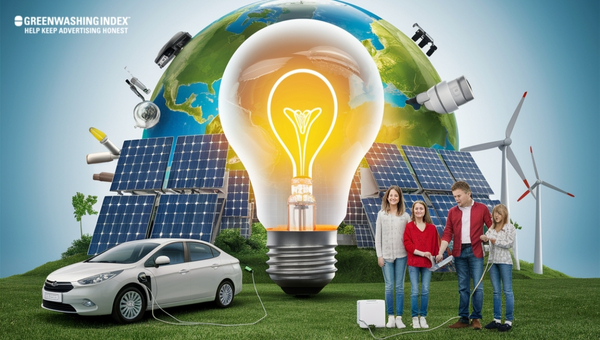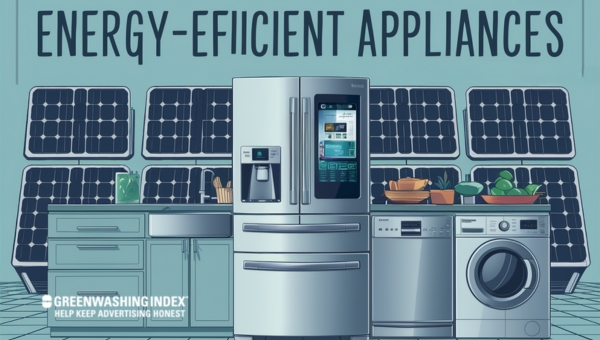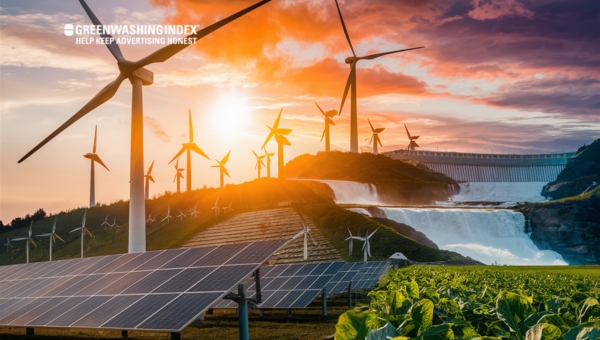

Rising energy costs and environmental concerns have made conserving energy more critical than ever before. The average American household spends over $2,000 annually on energy bills, with much of it wasted through inefficient practices and outdated habits.
By implementing proven ways to conserve energy, you can reduce your consumption by 25-30%, saving hundreds of dollars yearly while significantly reducing your carbon footprint. Whether you’re looking for simple behavioral changes or comprehensive home upgrades, understanding what can save energy be related to will help you make informed decisions about your energy usage.
This comprehensive guide covers what are ways to conserve energy across every area of your home, from quick daily habits to long-term investments in efficiency. You’ll discover 10 ways to save energy immediately, learn advanced strategies for the future, and understand how each method impacts both your wallet and the environment.
Energy conservation extends far beyond simply turning off lights. Understanding what can save energy be related to helps you see the bigger picture of how your daily choices impact both your finances and the environment. Every kilowatt-hour saved represents reduced demand on power plants, lower emissions, and more money in your pocket.

According to the U.S. Environmental Protection Agency, the average household’s energy consumption produces approximately 16,000 pounds of CO2 annually. By implementing effective ways to conserve energy, you directly reduce greenhouse gas emissions, helping combat climate change while improving local air quality.
Energy costs typically represent 5-10% of household budgets, but inefficient homes can see this percentage double. Understanding ways of conserving energy helps identify where your money goes each month. The U.S. Department of Energy reports that heating and cooling account for nearly half of home energy use, making it the largest opportunity for savings.
When you implement ways to conserve energy, you contribute to:
Cost Savings Calculator: A typical household implementing comprehensive energy conservation can save $500-$1,500 annually. Calculate your potential savings based on your current energy usage and local rates.
You don’t need major renovations to start saving energy immediately. These 10 ways to save energy require minimal effort but deliver noticeable results on your next utility bill. Each strategy represents a simple change that, when combined, creates significant impact.
“Phantom” or “vampire” power occurs when devices draw electricity while turned off but still plugged in. This standby power accounts for 5-10% of residential electricity use, costing the average home approximately $100 annually. Game consoles, cable boxes, and device chargers are common culprits.
Action Steps:
Maximizing natural daylight reduces the need for artificial lighting during peak hours. Strategic use of natural light is one of the simplest ways how to conserve energy for future sustainability. Studies show that effective daylighting can reduce lighting energy use by 50-80% during daylight hours.
Implementation Tips:
Smart power strips represent one of the most effective ways to conserve energy with minimal investment. Unlike traditional power strips, these devices automatically cut power to peripherals when the main device is turned off, eliminating phantom loads without manual intervention.
Heating water for laundry consumes approximately 90% of the energy used by washing machines. Switching to cold water washing is among the easiest 10 ways to conserve energy in your home. Modern detergents are formulated to work effectively in cold water, making this switch seamless.
Benefits Include:
Clothes dryers account for approximately 6% of residential electricity use. Air-drying represents one of the most impactful ways to conserve heat and energy in your home. Similarly, skipping the heated dry cycle on dishwashers saves significant energy.
Quick Reference Checklist:
✓ Unplug unused chargers and devices
✓ Switch to cold water washing
✓ Air-dry dishes and clothes when possible
✓ Use natural light during daytime hours
✓ Install smart power strips in high-use areas
✓ Turn off lights when leaving rooms
✓ Close blinds during peak summer heat
✓ Use task lighting instead of overhead lights
✓ Program devices to sleep mode
✓ Batch similar tasks to reduce appliance use
Lighting accounts for approximately 15% of residential electricity use, making it a prime target for conservation efforts. Modern lighting technology offers numerous 10 ways to conserve electricity while actually improving light quality and ambiance in your home.

LED bulbs use up to 85% less energy than traditional incandescent bulbs and last up to 25 times longer. This dramatic efficiency makes LED conversion one of the most impactful ways of conserving energy available to homeowners. The ENERGY STAR LED lighting guide provides comprehensive selection criteria.
LED Benefits by the Numbers:
Cost Analysis: While LEDs cost $5-15 per bulb, each saves $100+ over its lifetime in energy costs, providing ROI within 6-12 months.
Understanding how to best preserve energy through strategic lighting design reduces overall consumption while improving functionality. Task lighting focuses light exactly where needed, eliminating the need to illuminate entire rooms for specific activities.
Strategic Placement Guidelines:
Smart lighting controls represent advanced ways how to conserve energy for future efficiency. These systems ensure lights operate only when needed, eliminating waste from forgotten switches or unnecessary operation.
Control Options Include:
Effective daylighting strategies can reduce lighting needs by 50-80% during daylight hours. This passive approach to conserving energy requires no ongoing costs while providing health benefits from increased natural light exposure.
Daylighting Techniques:
Heating and cooling systems consume nearly half of residential energy, making HVAC optimization essential for anyone seeking ways to conserve energy and heat source efficiency. Smart management of these systems provides the largest potential savings in most homes.
The Department of Energy recommends specific temperature settings that balance comfort with efficiency. These guidelines help you understand what are ways to conserve energy without sacrificing comfort.
Recommended Settings:
Each degree of adjustment saves approximately 3% on heating or cooling costs. Setting your thermostat back 7-10°F for 8 hours daily can reduce annual heating and cooling costs by up to 10%.
Programmable and smart thermostats automate temperature adjustments, ensuring optimal efficiency without manual intervention. These devices represent modern ways to conserve energy and heat source management through intelligent scheduling and learning algorithms.
Smart Thermostat Features:
ROI Calculation: Smart thermostats typically cost $100-300 but save $180+ annually, providing payback within 6-18 months.
Proper insulation and air sealing are fundamental ways to conserve heat and energy year-round. The ENERGY STAR Home Sealing guide indicates that comprehensive weatherization can reduce heating and cooling costs by up to 20%.
Priority Areas for Insulation:
Air Sealing Targets:
Maximizing the efficiency of your heating source itself provides substantial savings. Whether you use natural gas, electricity, or alternative fuels, proper maintenance and operation are crucial 10 ways of conserving energy in your HVAC system.
Maintenance Schedule:
Seasonal Temperature Setting Chart:
| Season | Time Period | Recommended Temperature | Potential Savings |
|---|---|---|---|
| Summer | Home & Awake | 78°F | Baseline |
| Summer | Away/Sleeping | 82-85°F | 6-12% |
| Winter | Home & Awake | 68°F | Baseline |
| Winter | Away/Sleeping | 65°F | 5-10% |
The kitchen contains some of the most energy-intensive appliances in your home. Implementing these 10 ways to conserve electricity in your kitchen can reduce this room’s energy consumption by 25-40% while maintaining full functionality.

Smart cooking methods represent practical ways of conserving energy that save money with every meal. The cooking method you choose significantly impacts energy consumption.
Energy-Saving Cooking Methods:
Pro Tips:
Refrigerators run continuously, making optimization crucial for conserving energy. Proper settings and maintenance can reduce a refrigerator’s energy use by 15-25%.
Optimal Settings and Practices:
Modern dishwashers use less water and energy than hand washing, but optimization further enhances savings. These practices are essential 10 ways to conserve electricity in daily kitchen operations.
Efficiency Guidelines:
Small appliances collectively consume significant electricity through standby power. Identifying and managing these vampires is among the most effective ways to conserve energy with minimal effort.
Common Kitchen Energy Vampires:
Appliance Energy Consumption Comparison Table:
| Appliance | Average Watts | Annual kWh | Annual Cost* | Energy-Saving Alternative |
|---|---|---|---|---|
| Electric Oven | 2,000-5,000 | 250-300 | $30-40 | Microwave/Toaster Oven |
| Coffee Maker | 900-1,200 | 45-90 | $5-12 | French Press |
| Dishwasher | 1,200-2,400 | 200-300 | $25-40 | Air-dry Setting |
| Microwave | 600-1,200 | 60-120 | $8-16 | Covers to Reduce Time |
| Electric Kettle | 1,200-1,500 | 40-80 | $5-10 | Heat Only What’s Needed |
Water heating represents approximately 18% of home energy use, making it the second-largest energy expense after HVAC. Understanding effective ways to conserve energy in water heating can reduce this cost by 25-50% through strategic improvements and behavioral changes.
The Consumer Product Safety Commission recommends setting water heaters at 120°F to prevent scalding while optimizing energy use. This temperature provides comfortable hot water while minimizing standby heat loss and mineral buildup.
Temperature Setting Benefits:
Proper insulation represents one of the simplest ways how to conserve energy for future savings. Water heater blankets and pipe insulation provide immediate returns through reduced standby heat loss.
Insulation Strategies:
Timer Benefits: Installing a timer to shut off electric water heaters during sleep hours and work days can reduce water heating costs by 15-25%.
Water-efficient fixtures reduce both water consumption and the energy needed to heat it. These upgrades are among the most cost-effective 10 ways to save energy in any home.
Fixture Specifications and Savings:
The EPA WaterSense program certifies fixtures that meet efficiency standards while maintaining performance.
Modern water heating technologies offer superior efficiency compared to traditional tank heaters. These alternatives represent advanced ways of conserving energy for homeowners ready to invest in long-term savings.
Technology Comparison:
Your home’s envelope—walls, windows, doors, and roof—serves as the barrier between conditioned indoor space and outdoor temperatures. Improving this barrier is fundamental to conserving energy year-round, with potential savings of 20-30% on heating and cooling costs.
Windows account for 25-30% of residential heating and cooling energy use. Strategic window improvements and treatments provide immediate and long-term ways to conserve heat and energy.
Window Efficiency Strategies:
Seasonal Window Management:
Air leaks around doors waste substantial energy year-round. Proper sealing is one of the most cost-effective 10 ways of conserving energy with immediate results.
Sealing Techniques:
Quick Test: Hold a lit incense stick near door edges on windy days—smoke movement indicates air leaks requiring sealing.
Inadequate insulation causes significant heat transfer, making proper insulation crucial for how to best preserve energy in your home. The Department of Energy’s Insulation Guide provides climate-specific recommendations.
Insulation Priority Areas:
Basements and foundations account for up to 20% of home energy loss. Addressing these areas provides substantial ways to conserve energy often overlooked by homeowners.
Common Problem Areas:
DIY Energy Audit Checklist:
☐ Check attic insulation depth (should be 10-14 inches)
☐ Feel for drafts around windows and doors
☐ Look for daylight around door frames
☐ Inspect weatherstripping condition
☐ Check for gaps around pipes and wires
☐ Test outlets on exterior walls for drafts
☐ Examine fireplace damper seal
☐ Verify dryer vent closes properly
☐ Assess basement wall insulation
☐ Scan for moisture issues indicating air leaks
Smart home technology transforms energy management from reactive to proactive. These innovations represent the most advanced ways how to conserve energy for future sustainability, offering unprecedented control and optimization.
Integrated smart home systems provide comprehensive energy monitoring and control. These platforms show exactly what can save energy be related to in real-time, enabling informed decisions.
Core Smart Home Components:
Integration Benefits:
Real-time monitoring reveals exactly what are ways to conserve energy most effectively in your specific home. These systems identify waste and track improvement progress.
Monitoring Capabilities:
Popular systems like Sense Energy Monitor or Emporia Vue provide insights that typically lead to 10-15% energy reductions through behavioral changes alone.
Internet of Things (IoT) devices create an intelligent network optimizing energy use automatically. These represent cutting-edge effective ways to conserve energy through artificial intelligence and machine learning.
High-Impact IoT Applications:
Renewable energy systems represent the ultimate ways to conserve energy and heat source diversity while achieving energy independence. Modern solar technology offers accessible entry points for most homeowners.

Renewable Options:
The Database of State Incentives for Renewables & Efficiency provides comprehensive information on available rebates and tax credits.
ROI Calculation Example:
Technology alone isn’t enough—daily habits determine energy consumption. Understanding how to best preserve energy through behavioral changes costs nothing while delivering substantial savings.
Developing automatic energy-saving behaviors is among the most sustainable ways of conserving energy long-term. Small actions compound into significant savings.
21-Day Habit Formation Guide:
Week 1 – Awareness Building:
Week 2 – Active Changes:
Week 3 – Reinforcement:
Engaging all household members multiplies conservation impact. Teaching children 10 ways to conserve energy creates lifelong sustainable habits.
Family Engagement Strategies:
Age-Appropriate Tasks:
Adapting behaviors seasonally maximizes natural conditions for conserving energy. These adjustments require no investment while providing year-round benefits.
Seasonal Strategies:
Spring:
Summer:
Fall:
Winter:
Remote work presents unique opportunities for 10 ways to save energy through optimized scheduling and equipment use.
Home Office Optimization:
Schedule Optimization:
Every room presents unique opportunities for energy conservation. This comprehensive guide provides specific 10 ways of conserving energy tailored to each space in your home.
Entertainment systems consume significant electricity even when “off.” The living room often represents the highest concentration of phantom loads in homes.
Living Room Conservation Strategies:
Bedrooms offer excellent opportunities for conserving energy through comfort-focused strategies that improve sleep quality while reducing costs.
Bedroom Efficiency Tips:
Bathrooms combine high electricity and hot water use, making them critical for effective ways to conserve energy implementation.
Bathroom Savings Opportunities:
With remote work increasing, home offices require special attention for ways how to conserve energy for future productivity without waste.
Office Energy Management:
Often overlooked, garages and outdoor areas present substantial opportunities for 10 ways to conserve electricity through proper management.
Outdoor Conservation Measures:
Room-Specific Energy Savings Checklist:
| Room | Quick Wins | Investment Options | Potential Savings |
|---|---|---|---|
| Living Room | Smart strips, LED bulbs | Smart TV, efficient HVAC | 15-25% |
| Kitchen | Cold wash, full loads | ENERGY STAR appliances | 20-30% |
| Bedroom | Lower night temps, unplug | Blackout curtains, fans | 10-20% |
| Bathroom | Shorter showers, fix leaks | Low-flow fixtures | 15-25% |
| Office | Sleep modes, natural light | Efficient equipment | 20-40% |
| Garage | Seal doors, LED lights | Insulated doors | 5-15% |
Understanding the financial impact of energy improvements helps prioritize actions. This analysis demonstrates what are ways to conserve energy that provide the best return on investment.
Not all energy-saving measures provide equal returns. Understanding payback periods helps you implement effective ways to conserve energy in the most financially sound order.
ROI Calculation Formula:
Quick Payback Improvements (Under 2 Years):
Strategic prioritization ensures maximum benefit from your conservation budget. These ways to conserve heat and energy are ranked by typical household impact.
High-Impact Priorities:
Government and utility programs significantly reduce the cost of energy improvements. The ENERGY STAR Rebate Finder helps locate available incentives for ways of conserving energy in your area.
Common Incentive Programs:
Example Savings with Incentives:
Balancing immediate needs with long-term goals optimizes your conservation investment. Understanding how to best preserve energy requires both perspectives.
Short-term Strategies (Immediate to 2 years):
Long-term Strategies (3-10 years):
Even well-intentioned efforts can backfire without proper knowledge. Avoiding these common mistakes ensures your 10 ways to conserve energy deliver maximum benefits.
Many people believe extreme temperature settings cool or heat spaces faster. This misconception wastes substantial energy without improving comfort speed.
The Reality:
Better Approach: Set reasonable temperatures and be patient. Use fans to improve perceived comfort without extreme thermostat adjustments.
Skipping annual maintenance seems like saving money but costs more long-term through reduced efficiency and premature replacement needs.
Maintenance Impact:
Proper Maintenance Schedule:
Keeping old appliances “to avoid waste” often wastes more energy than replacing them with efficient models.
When to Replace:
Focusing on equipment while ignoring the building envelope undermines all other conservation efforts.
Common Oversights:
Several persistent myths lead to wasted effort and missed opportunities for conserving energy.
Debunked Myths:
The most effective ways to conserve energy without significant investment include behavioral changes and minor upgrades. Start with these budget-friendly options:
These simple changes typically pay for themselves within months while reducing energy consumption by 15-25%.
Realistic savings depend on current efficiency levels and commitment to change. Comprehensive implementation of 10 ways to conserve energy typically yields:
The U.S. Department of Energy estimates that comprehensive efficiency improvements can cut energy bills in half.
The fastest returns come from low-cost improvements addressing major energy uses. These ways how to conserve energy for future savings offer payback within 6-18 months:
Focus on these quick wins first, then reinvest savings into larger improvements.
Yes! Renters can implement numerous ways of conserving energy without permanent modifications:
Renter-Friendly Options:
Many landlords support efficiency improvements that reduce utility costs and improve property value. Always communicate proposed changes and emphasize mutual benefits.
Smart devices optimize energy use through automation, monitoring, and intelligent control. They eliminate human error while maximizing efficiency opportunities for conserving energy:
Smart Device Benefits:
Studies show homes with comprehensive smart systems reduce energy use by 20-30% through optimization alone.
Energy conservation combines immediate actions with long-term strategies to create substantial savings and environmental benefits. By implementing these comprehensive ways to conserve energy, you can reduce consumption by 25-50% while improving home comfort and value.
Key Takeaways:
Whether you implement 10 ways to save energy or adopt all strategies presented, every action contributes to a more sustainable future. The combination of modern technology, proven techniques, and conscious behaviors makes dramatic energy reduction achievable for every household.
Remember that effective ways to conserve energy evolve with technology and understanding. Stay informed about new developments, maintain your improvements, and continue refining your approach. The journey toward energy efficiency is ongoing, but the benefits—financial, environmental, and personal—make every effort worthwhile.
Start Today: Choose one room or one category from this guide. Implement the suggested changes, track your results, and build momentum toward comprehensive home energy efficiency. Your future self, your wallet, and the planet will thank you.

Don't let aphids, slugs, and caterpillars ruin another plant. Take back control with simple, natural methods that actually work.